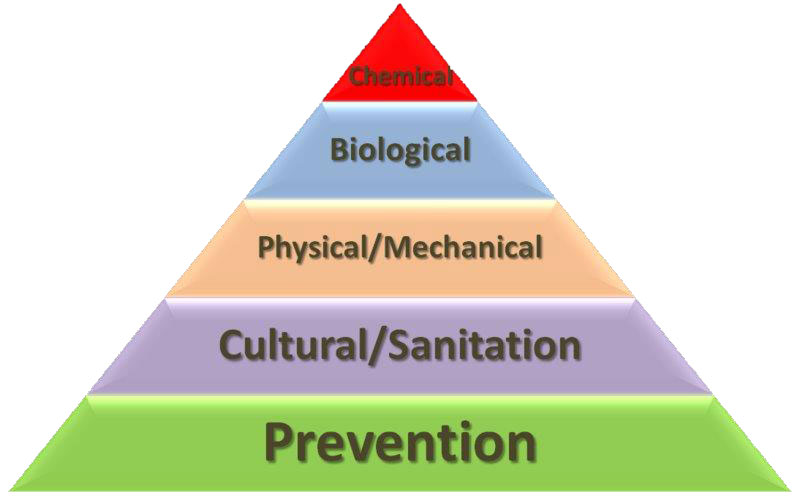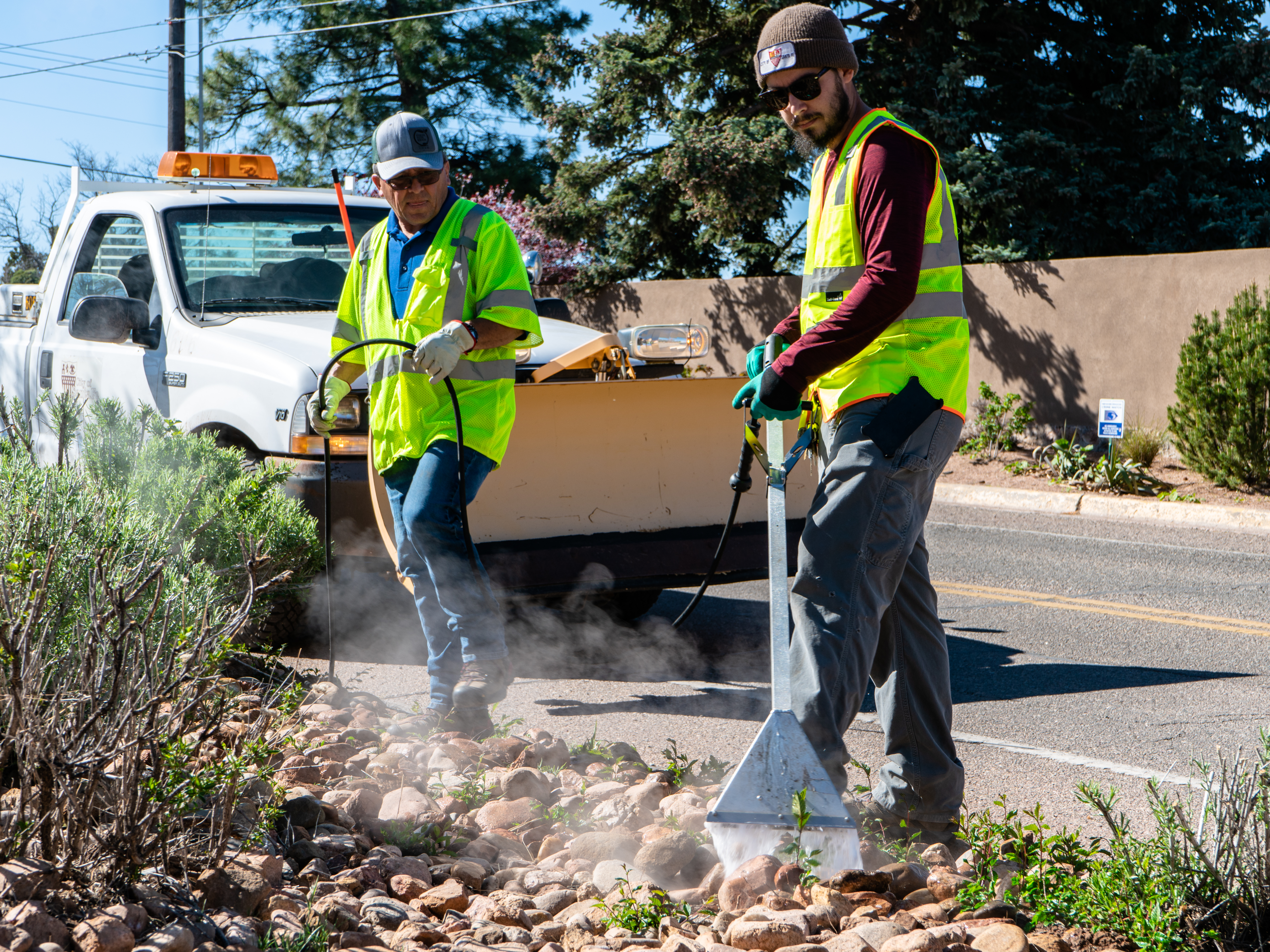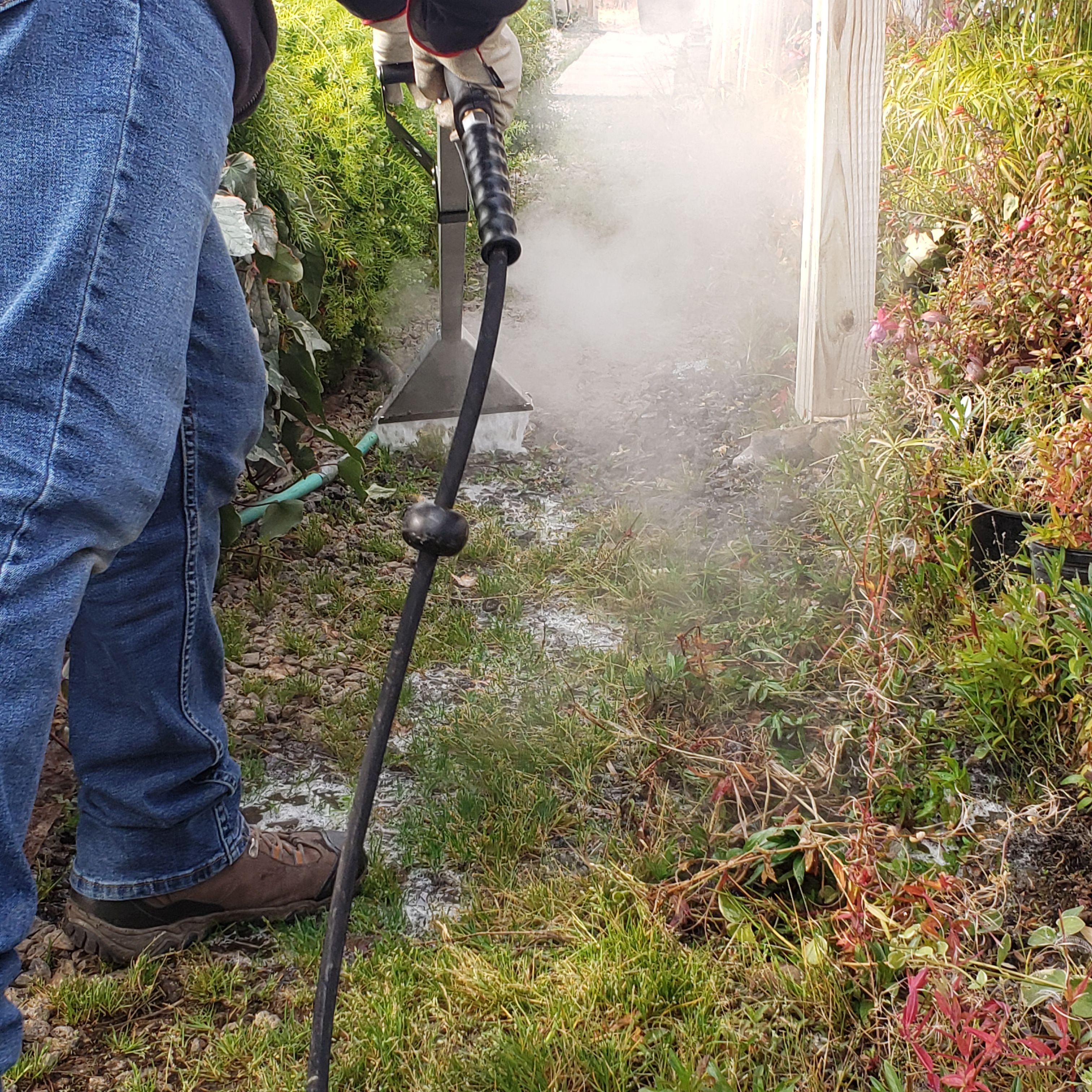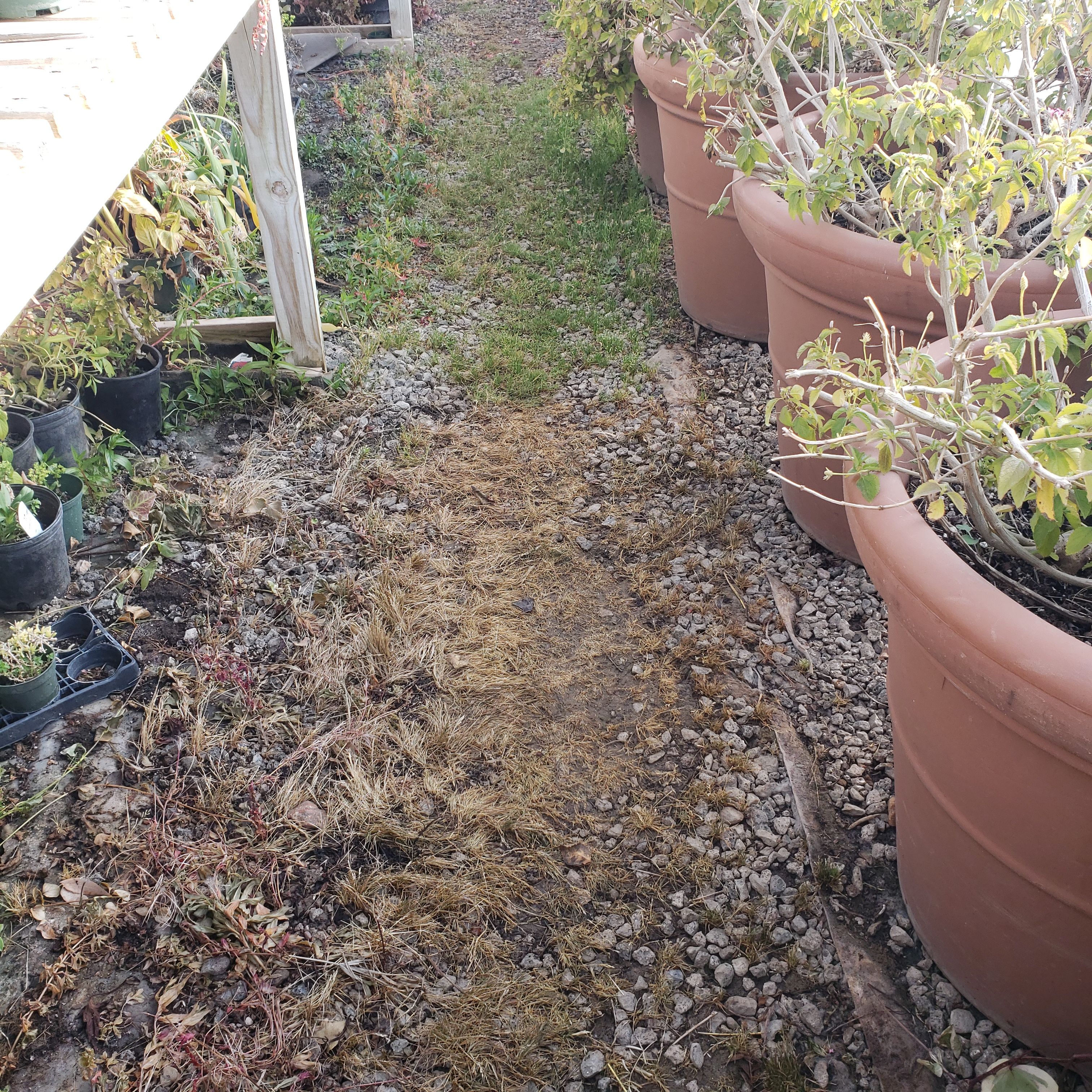Public Works
Need Assistance?
Speak with a parks specialist to learn about community gardens, trails and park amenities.
Tuesday - Friday
6:00 a.m. to 4:00 p.m.
Information Hotline
505-955-2106
Contact
Parks and Open Space Division
1142 Siler Road
Building C
Santa Fe, NM 87507
Monday – Friday
7:00 a.m. to 4:00 p.m.
Parks Emergency On-Call Center
505-231-7045
Melissa McDonald
Parks & Open Space Division Director
mamcdonald@santafenm.gov
Nathan Saiz
Parks Operations Manager
nrsaiz@santafenm.gov
Scott Overlie
Project Manager
saoverlie@santafenm.gov
Ryan Pitcher
IPM Program Manager
rspitcher@santafenm.gov
City of Santa Fe IPM Program
 What is IPM?
What is IPM?
Integrated Pest Management (IPM) is a decision-making process for managing pests that uses monitoring to determine pest injury levels and primarily uses cultural, mechanical, physical, and biological tools to minimize health, environmental, and financial risks. The method uses extensive knowledge about pests, such as infestation thresholds, life histories, environmental requirements, and natural enemies, to complement and facilitate biological and other natural control of pests. The method uses the least toxic synthetic pesticides only as a last resort to manage pests.
The Goal of IPM
The goal of IPM is not to eradicate pests but to eliminate pest problems by strengthening and stabilizing the landscape so that conditions are more favorable for plants than for pests. By using scouting and monitoring practices for pests (insects, other arthropods, weeds, pathogens, or vertebrates), actions to suppress population levels can be made in a timely manner using a combination of the most environmentally friendly and cost-effective tactics available.
Foamstream® Weed Machine
The Foamstream® Weed Machine combines air, heated water, and a biodegradable concentrate of plant-based oils and sugars to create a coating of foam to cover weeds and kill them.  A metal lance distributes a foam coating allowing heat between 194 and 203 degrees Fahrenheit to kill unwanted vegetation by retaining the heat over them for a few seconds. Because the foam ingredients are 100% herbicide free, it is safe for use near animals and pollinators. It can also be used in close proximity to established plants and trees because the heat doesn’t penetrate far enough below the surface to affect their roots while also eliminating weeds competing with trees for nutrients, water, and light.
A metal lance distributes a foam coating allowing heat between 194 and 203 degrees Fahrenheit to kill unwanted vegetation by retaining the heat over them for a few seconds. Because the foam ingredients are 100% herbicide free, it is safe for use near animals and pollinators. It can also be used in close proximity to established plants and trees because the heat doesn’t penetrate far enough below the surface to affect their roots while also eliminating weeds competing with trees for nutrients, water, and light.
This weed mitigation tool can be used in many of Santa Fe's outdoor spaces where weeds can proliferate, including ball field fence lines and infield surfaces, hardscapes, decorative gravel, decomposed granite beds, dog parks, golf course bunkers, and traffic medians. The new tool was unveiled in May 2023, and the Parks Division will monitor and collect data on the machine's effectiveness over the upcoming weed season.


Testing the Foamstream®: during application (left) vs. several days after application (right)
